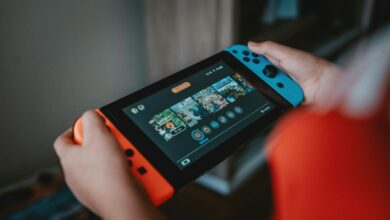25 Most Famous Groupthink Examples in History

Groupthink, defined by Irving Janis in 1972, is when cohesive groups make poor decisions by prioritizing harmony over critical thinking. It leads to overlooking alternatives and ignoring dissent, often resulting in negative outcomes.
This article will cover real-world examples of groupthink across history, corporations, and social phenomena to illustrate its impact.
From the Bay of Pigs Invasion to the Challenger disaster, from New Coke’s market failure to the dynamics of social media echo chambers, we’ll dissect how groupthink has shaped events and decisions, sometimes disastrously.
Understanding groupthink is crucial for recognizing and preventing it in various settings. By analyzing these examples, readers will learn to foster environments that value diverse viewpoints and critical analysis, leading to better decision-making.
This will help individuals and leaders to avoid common pitfalls of consensus-driven errors, ensuring more thoughtful and effective outcomes in their endeavors.
Coming Up Next
Historical Examples of Groupthink
The Bay of Pigs Invasion
This was a failed military invasion of Cuba in 1961, largely attributed to the U.S. administration’s overconfidence and the dismissal of contrary opinions within its ranks. The lack of critical debate and questioning led to underestimating the complexities of the invasion, resulting in a significant defeat.
The Salem Witch Trials
Occurring in 1692, these trials are an example of mass hysteria and the dangers of groupthink, where the fear of dissent and the desire for social harmony led to the wrongful accusation and execution of many for witchcraft, based on scant or no evidence.
The Challenger Space Shuttle Disaster
In 1986, NASA launched the Challenger despite known risks with the O-ring seals in cold temperatures. Pressured to maintain schedule and under public scrutiny, decision-makers ignored warnings from engineers, leading to a tragedy that claimed seven lives.
The Enron Collapse
The energy company’s downfall in 2001 was partly due to a corporate culture that prioritized success and control, stifling dissenting voices and ethical concerns. This fostered a toxic environment where risky financial practices went unchecked until they led to one of the largest bankruptcies in U.S. history.
The 2003 Invasion of Iraq
Driven by flawed intelligence and a strong narrative push from leadership, the U.S. and its allies invaded Iraq under the belief that it possessed weapons of mass destruction. The desire to align with this narrative led to the dismissal of contradictory evidence, with profound consequences.
The Pearl Harbor Attack
In 1941, a combination of overconfidence and underestimation of Japanese military capabilities led to a lack of preparedness for the attack on Pearl Harbor. Key warning signs were ignored, contributing to the devastating surprise attack.
The Vietnam War Escalation
The decision to escalate U.S. involvement in Vietnam was influenced by misconceptions about the enemy’s capabilities and motivations. Beliefs in American military superiority and the moral high ground led to a prolonged conflict with heavy losses and no clear victory.
Contemporary Examples
The Financial Crisis of 2008
This crisis was fueled by the widespread belief in the perpetual increase of house prices, leading to excessive risk-taking in the housing and financial markets. The failure to recognize the growing bubble in real estate prices and mortgage debt contributed to a catastrophic economic downturn when the bubble burst.
Social Media Echo Chambers
Digital platforms facilitate groupthink by creating environments where users are exposed primarily to viewpoints similar to their own. This reinforcement of ideas without exposure to differing opinions can amplify biases and misinformation, affecting public discourse and individual beliefs.
Corporate Missteps: New Coke
In the 1980s, Coca-Cola attempted to rebrand and reformulate its flagship product, leading to widespread consumer backlash. The decision, driven by unanimous agreement within Coca-Cola’s leadership without sufficient market testing, underestimated the public’s attachment to the original formula, demonstrating a classic case of groupthink in corporate decision-making.
Advertising Campaign Failures
Various instances where advertising strategies were poorly received can be attributed to groupthink, where a team’s unanimous decision fails to consider potential negative receptions by the wider public. These failures highlight the risks of homogenous group decision-making without external feedback.
Theoretical and Lesser-Known Examples
Fictional Narratives
Films like “12 Angry Men” and novels like “Lord of the Flies” serve as allegories for groupthink, illustrating how pressure towards unanimity can lead to flawed decision-making and social dynamics, demonstrating the power of dissenting voices in reaching more reasoned outcomes.
The American Auto Industry
For decades, the industry clung to producing large, fuel-inefficient vehicles despite growing consumer demand for smaller, more fuel-efficient cars. This reluctance to adapt was rooted in a collective denial of changing market trends and consumer preferences, ultimately leading to a loss of market share to more adaptable foreign competitors.
Health Misconceptions: Doctors Recommending Smoking
In the mid-20th century, smoking was promoted by some in the medical community as beneficial or harmless, a stance that persisted despite emerging evidence of health risks. This reflects groupthink in the medical community, where prevailing norms and industry pressures overshadowed critical analysis of evidence.
Cultural Phenomena: Mean Girls and the Wave
These narratives explore how groupthink can manifest in social settings and educational experiments, showing how easily individuals can be swayed by group dynamics and leadership, leading to actions and beliefs that individuals might not hold independently.
Analysis
Groupthink is facilitated by psychological and social dynamics, including a strong desire for group cohesion, which can overshadow individual dissent and critical analysis.
Leadership plays a crucial role; authoritative figures can inadvertently suppress diverse opinions, leading to uniformity in decision-making.
External pressures, such as deadlines or crises, further exacerbate the tendency towards groupthink by heightening the need for quick consensus.
Mitigation Strategies
To mitigate groupthink, fostering an environment that encourages dissenting opinions and critical evaluation is essential.
Strategies include promoting open dialogue, appointing a devil’s advocate in discussions, and ensuring leadership encourages diverse viewpoints.
Such approaches help create a culture where critical thinking is valued, reducing the risk of poor decision-making due to groupthink.
Top of Form
Conclusion
I hope this article has helped you a lot. The different groupthink examples above show why we must always watch out for groupthink in making decisions.
It’s crucial to listen to different ideas to make the best choices. Think about your role: Are you helping bring in new ideas, or just going along with the group?
Challenge yourself and others to ask questions and share different views.
This way, we can make smarter decisions together. Let’s make sure everyone’s voice is heard and valued.




GIPHY App Key not set. Please check settings